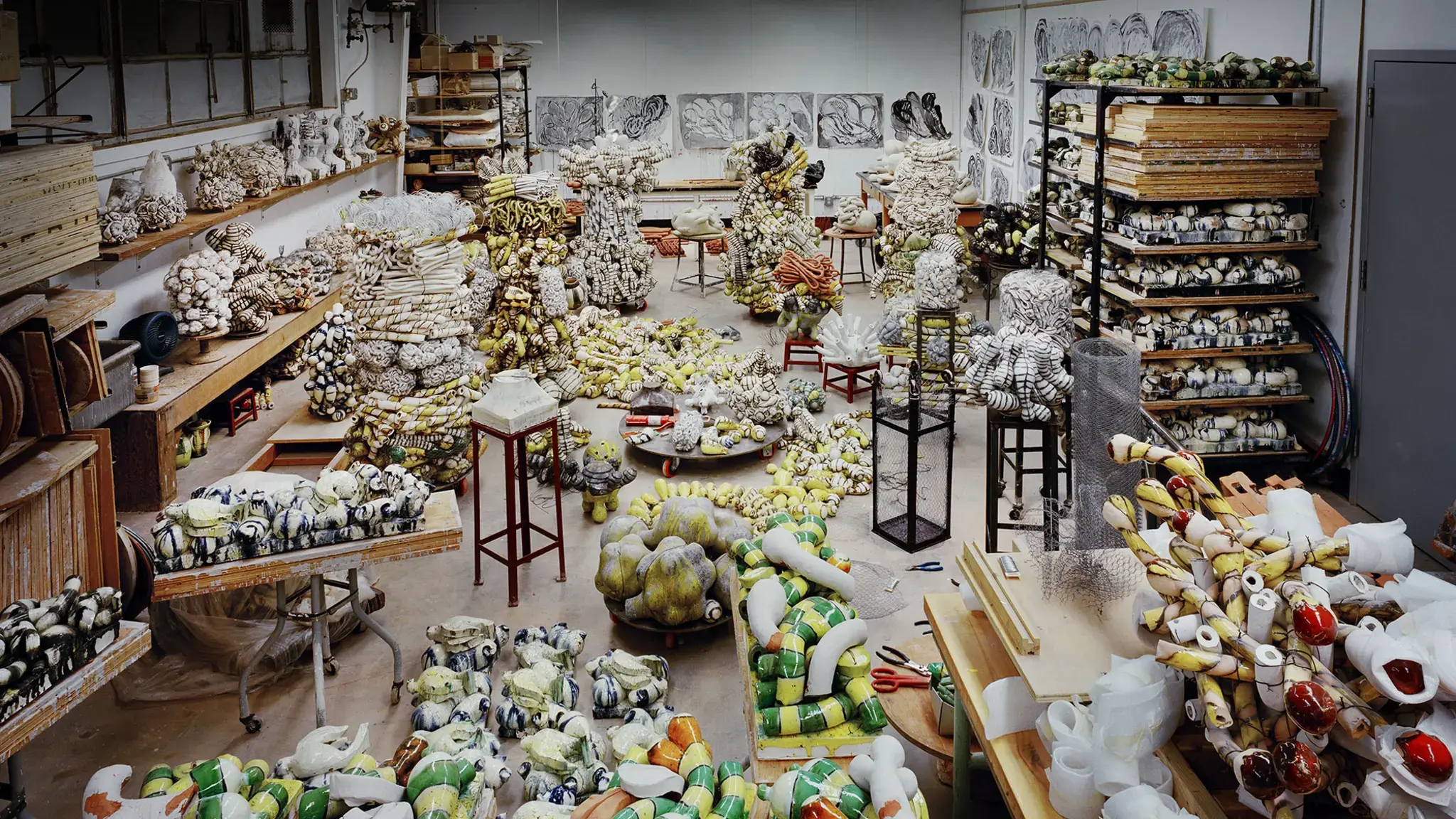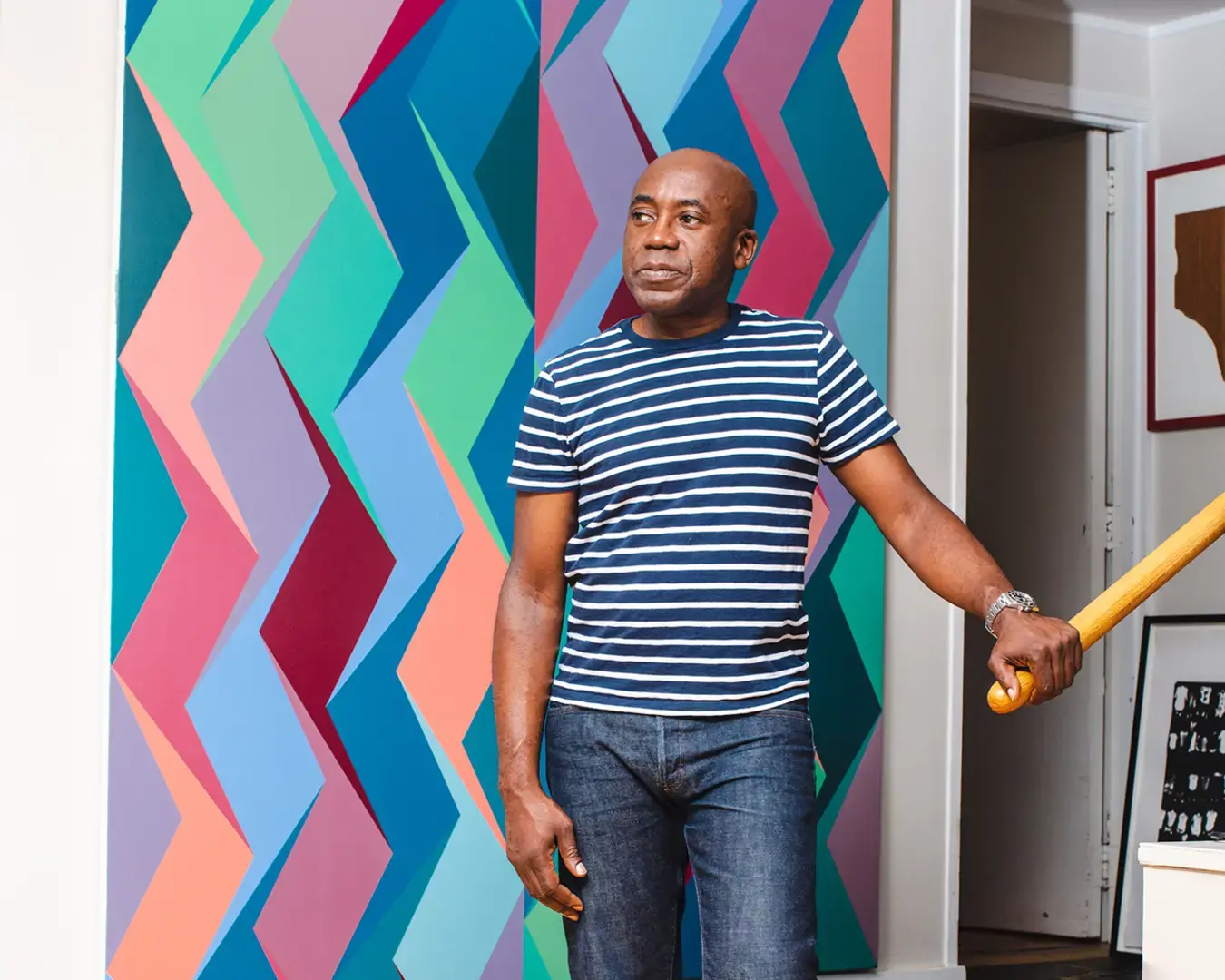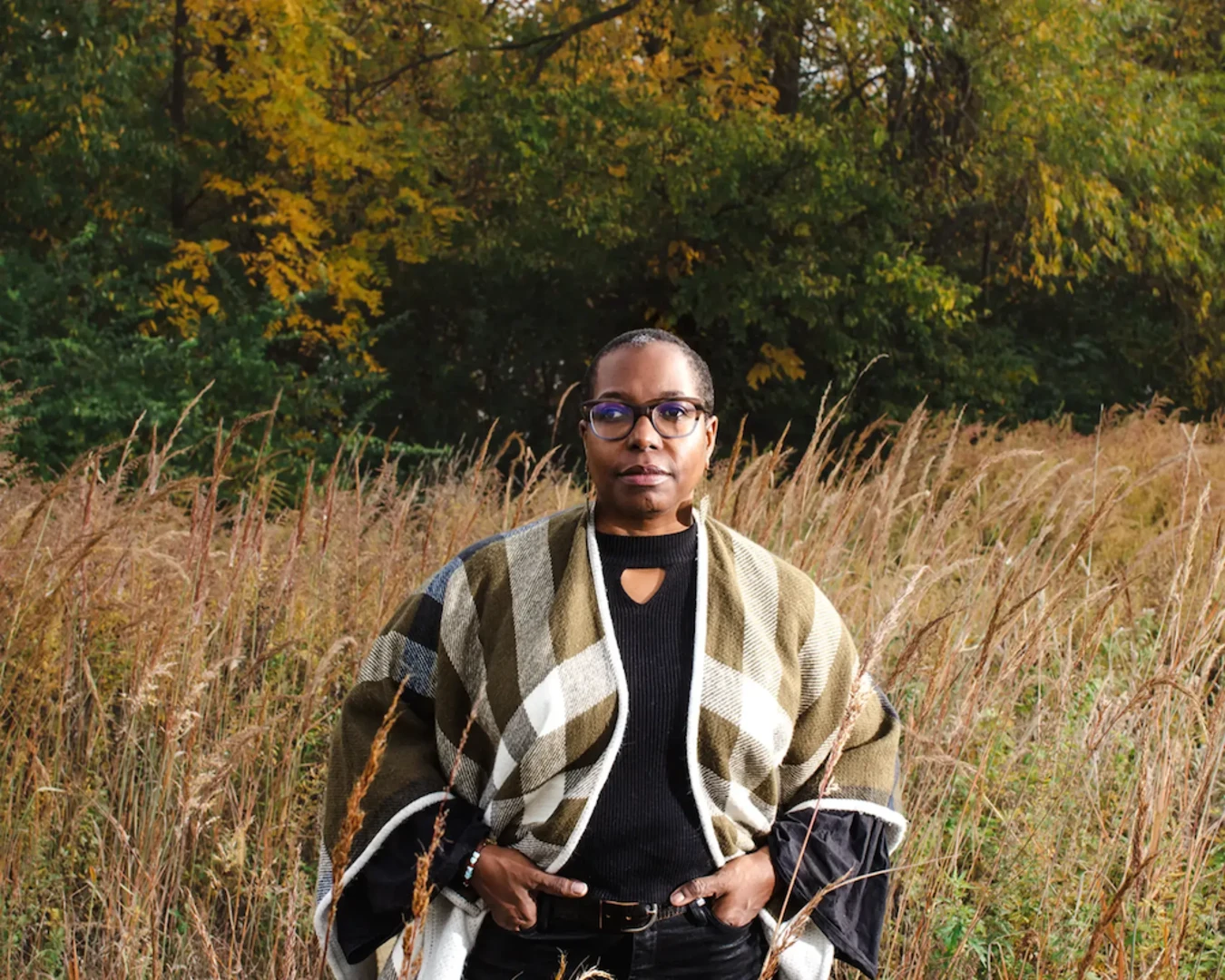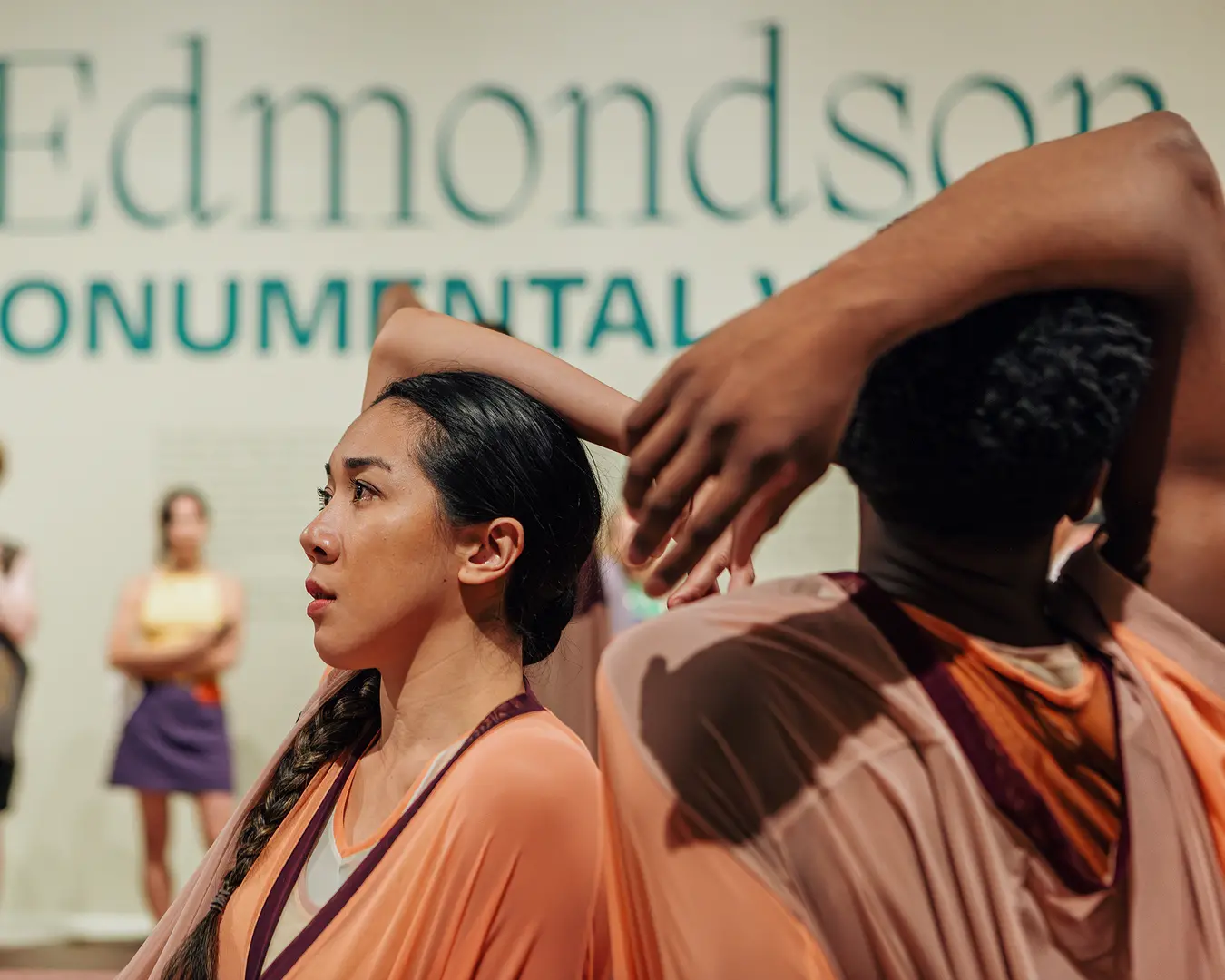Our “Fellows Friday” series focuses on the artistic lives of our Pew Fellows: their aspirations, influences, and creative challenges.
In conjunction with the Center’s celebration of the 25th anniversary of the Pew Fellowships in the Arts in 2017, we spoke to visual artist Annabeth Rosen (1992), who creates elaborate sculptures of clay that are “volcanic, beastly, catastrophic, and unnervingly funny,” as described by writer and critic Nancy Princenthal.1 Rosen’s work is included in the collections of the Los Angeles County Museum of Art, Museum of Fine Arts, Boston, Philadelphia Museum of Art, and Denver Art Museum, as well as in many private collections around the country. She has held the Robert Arneson Endowed Chair in Ceramic Sculpture at The University of California, Davis since 1997.
- 1. “Annabeth Rosen: Shape Shifter,” 2014, catalogue essay accompanying Annabeth Rosen exhibition at Ventana 244 gallery, New York City, published by Beam Contemporary and the University of California, Davis.
What is your daily art-making routine?
The night before I leave my studio, I clean up and prepare for the morning. At the end of the day my studio can look like an earthquake hit. I aim to work without interference, which can mean there is no space for me to continue working, with materials everywhere, or rubble on the floor so the doors won’t open or the carts won’t roll. My focus increases over the course of the afternoon while caution diminishes, working in response to both unconscious and conscious decisions until fatigue sets in and I tidy up for the next day and go home.
What images or things keep you company in the space where you work?
Everything is in my head; the vague sensation of the work I’m considering, the books I’m reading, some excitement and some anxiety; and nothing else much other than materials, a few tools, rolls of paper, paint for drawing, tea and a tea pot.
What is your biggest motivator as an artist?
My life as an artist has been to wake up and make my way to the studio, to think, and to work. I think that everything I need is most likely nearby or available if I pay close attention, if I am aware, so I don’t want to miss or overlook any possibilities in the work; so this may be the inducement to work. Not to be blind to or neglectful, as I can forget any moment of clarity in the midst of working, and a certain level of awareness is necessary and a constant reminder of how elusive it is to locate the elements that excite. I am interested in accumulation, the accumulation of objects, of marks, mostly of ideas.
If I say what excites me as motivation then it’s experiencing the new; making real things in the real world, even though I make them up, I invent them; and being part of the conversation that exists in the cultural context. Being an artist is difficult but the close common contact between artists and being in the conversation, even between wildly diverse artists, is extremely fulfilling and worthwhile.
Do you think about your legacy and, if so, how does your thinking about it affect your practice?
Rarely. I think we are the sum of our experience. Our relationships, our empathy, and all of these tiny instances of recognition build momentum and will ripple outward in slowly diminishing waves until everything is still.
In reflecting back to the beginning of your career, what is the most useful advice you ever received?
It wasn’t advice exactly; it was an example of seeing your way through the world. All knowledge, even difficult things you might not want to know, all visual information—everything is useful. Always remembering what you choose is contingent upon what you have available to choose from, so your experience, awareness, imagination has to be ever increasingly broad and deep.
For example, our heads—flesh covered with hair, with wet parts, soft parts like lips, and hard parts like teeth, and a tongue; stick out parts, musty parts, penetrable parts with pathways to the brain, and to the organs. We open our mouths and pour water into a hole in our heads. Some of us wear glass disks in front of our eyes hung off our ears that change our perception of the world. I couldn’t drive without mine, or see half way down the block. Some people can’t read without them. And they change the way I experience my work in the studio. Not to mention we paint our faces or tattoo them, we have wires in our mouths or epoxy, some people hang hunks of metal or stones from protuberances off their head or walk around with material stuff stuck on the top of our heads. When working, if you need any of these ideas, contrasts, functions, models as references, you have them—and if you are aware of them, you can use them.









